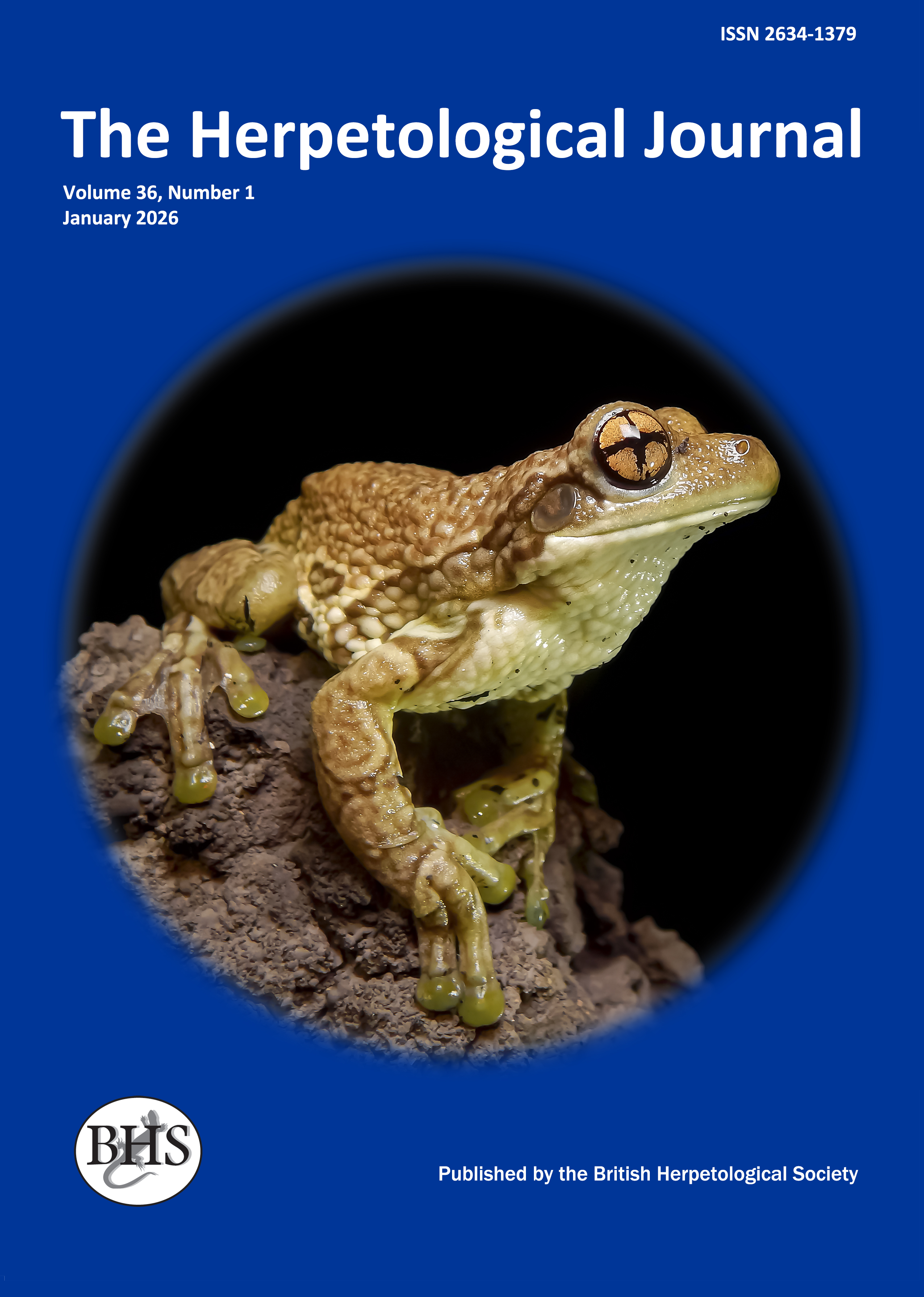
The Herpetological Journal
The Herpetological Journal is the Society's prestigious quarterly scientific journal. Articles are listed in Biological Abstracts, Current Awareness in Biological Sciences,Current Contents, Science Citation Index, and Zoological Record.
ISSN 0268-0130
2023 Impact Factor for the Herpetological Journal is 1.1, with the Journal sitting just below Quartile 2 in Zoology, at percentile 46.9
pdf 02. The effect of current velocity and temperature upon swimming juvenile green turtles Chelonia mydas L
1287 downloads
Open Access
pp.143-147
Authors: John Davenport , Nina De Verteuil And Shona H. Magill
Abstract: Young green turtles, Chelonia mydas responded to increasing current velocities by swimming upstream for a greater proportion of the time. At temperatures of 21-25°C currents equivalent to 1-2 body lengths s·1 induced continuous upstream swimming. At low current velocity the turtles usually employed ' dog-paddle' (ipsilateral synchronized) swimming. At swimming speeds of 0.8-1.4 body lengths s·1 they switched to synchronized forelimb flapping, with stationary rear limbs. Maximum dog-paddle speed was about 40% of maximum speed using synchronized foretlippers: the latter mechanism is clearly capable of generating far more propulsive power. Maximum sustained swimming speeds at 25°C, 21°C and 15°C were 3.3 1, 2. 96 and 2.09 body lengths s·1 respectively; the speed at 15°C was significantly lower than at the other two temperatures, and could not be sustained for more than 2-4 min before instability in pitch, roll and yaw prevented the animal from swimming upstream. A detailed analysis of the swimming mechanism at different temperatures is presented. This demonstrated a significant degradation of co-ordination of swimming at 15°C, even though the lethal temperature of green turtles is well below 10°C. The significance of this finding is discussed in terms of vulnerability of the species to cold.

